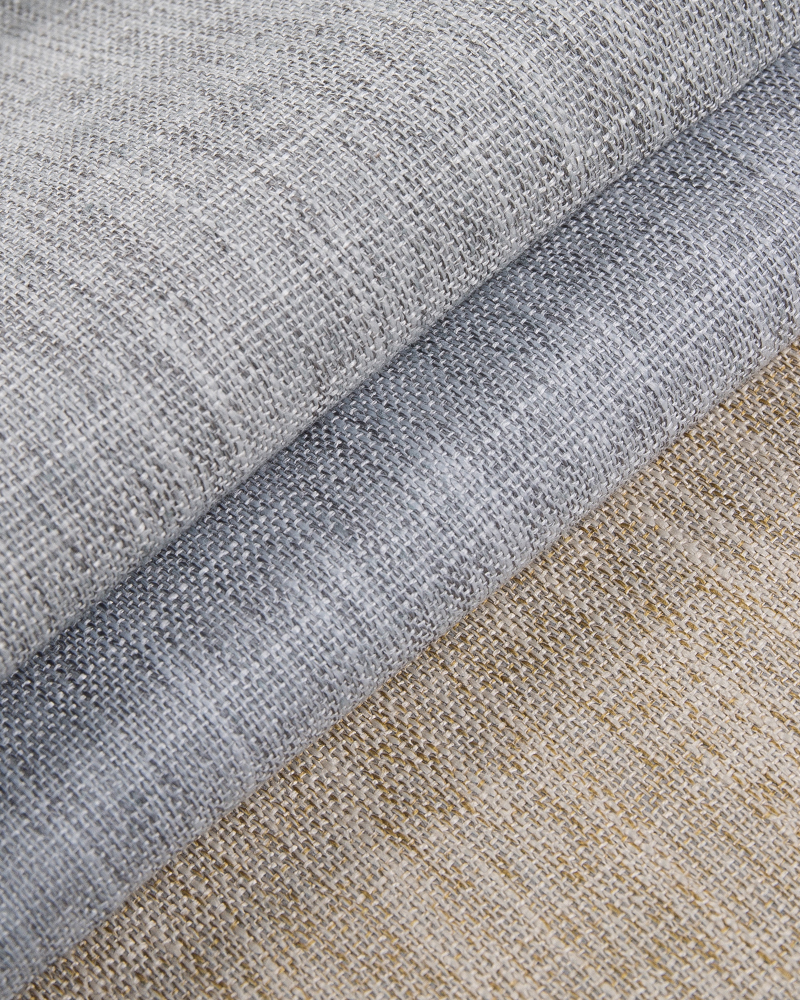
Seasonality is an important consideration when choosing the right cotton linen curtain fabric. The demand for curtains varies from season to season. Cotton linen curtains can adapt to a variety of climate conditions due to their breathability, comfort and natural texture. When choosing curtains, adjusting the material selection according to seasonal changes can improve comfort and extend the service life of the curtains. The following is a detailed guide on how to choose the right cotton linen curtain fabric according to different seasons:
The spring climate is warm and humid, so it is suitable to choose light and breathable cotton linen curtains. Cotton linen curtains in spring should focus on creating a fresh and natural atmosphere, while having good breathability and comfort.
The temperature in spring is usually moderate, and heavy curtains are not needed. Choosing light cotton linen fabrics can ensure indoor air circulation and avoid stuffiness.
Spring gives people a sense of vitality, so curtains with light colors (such as beige, light gray, light blue, light green, etc.) or with small fresh patterns (such as flowers, stripes, etc.) can add a natural atmosphere to the room.
The natural texture and feel of cotton and linen fabrics are suitable for the warm climate of spring and increase comfort.
Choosing single-layer cotton and linen curtains can keep air flowing while providing a certain degree of privacy protection.
For spring mornings or evenings, the curtains can be slightly thicker to block the cold in the morning and evening, but the overall feeling should still be kept light.
The temperature is higher in summer, and more attention needs to be paid to the sunshade and breathability of the curtains. Cotton and linen curtains are suitable for summer use due to their natural fiber structure, which can keep the room cool while ensuring sunshade.
Summer cotton and linen curtains should choose lighter and thinner fabrics to ensure that the curtains have good light transmittance, allowing natural light to enter, but can effectively block excessive sunlight to prevent the indoor temperature from being too high.
The natural fibers of cotton and linen fabrics can keep a cool feeling in the hot summer, so choosing cotton and linen curtains with good breathability can help regulate the indoor temperature and reduce the use of air conditioners or fans.
Light-colored curtains (such as white, beige, light blue, light gray, etc.) can reflect more sunlight, avoid heat absorption, and help keep the room cool. In addition, the elegant pattern design can also make the space look more refreshing and pleasant.
Choose natural pure cotton and linen fabrics or cotton and linen blended fabrics to ensure the breathability and moisture absorption of the curtains.
You can choose thin or single-layer curtains to avoid the stuffiness caused by too thick fabrics.

The climate gradually turns cooler in autumn. When purchasing cotton and linen curtains, you should start to pay attention to warmth retention, while maintaining a certain breathability and comfort to create a warm home atmosphere.
The cotton and linen curtains in autumn should be of moderate thickness, which can not only ensure breathability, but also provide a certain warmth retention when the temperature is lower in the morning and evening.
The tones of autumn are warmer, and you can choose warm-colored curtains such as dark beige, gold, coffee, orange, and brown. These tones can create a warm family atmosphere.
In autumn, it is suitable to use earth tones and simple patterns such as classic stripes, plaids, and diamonds. These elements can better echo the harvest and natural landscape of autumn.
It is suitable to choose thicker cotton and linen blended curtains, which have a certain warmth retention effect but are not too heavy.
If the space at home is large or facing the north wind, you may need to add an insulation layer on the back of the curtains to increase the insulation effect.
Winter is the season with the lowest temperature. When choosing cotton and linen curtains, you should not only consider beauty and comfort, but also pay attention to the insulation of the curtains. The main function of winter curtains is to keep out the cold and keep the room warm.
In winter, you should choose thicker cotton and linen curtains, which can effectively block the invasion of cold air from the outside while keeping the room warm. Although cotton and linen themselves have good air permeability, the curtains needed in winter should be relatively thicker.
Dark curtains (such as dark gray, dark blue, dark green, etc.) can effectively absorb heat and keep the room warm. You can choose cotton and linen curtains with velvet or thickened designs. This kind of curtain is not only warmer visually, but also can bring better warmth to touch.
If the home is cold in winter, you can consider choosing double-layer cotton and linen curtains. You can choose slightly thicker cotton and linen curtains for the outer layer, and add a layer of thick cloth or insulation for the inner layer to provide better insulation.
Choose thicker cotton and linen blended curtains, preferably with an inner lining or velvet layer to improve the heat preservation of the curtains.
If you want to keep natural light in winter, you can choose cotton and linen curtains with blackout function, which can effectively block the cold air and enhance the warmth of the curtains through the inner lining.
Choosing the right cotton and linen curtain fabric according to different seasons can improve the comfort of living and enhance the functionality of the curtains. Light and breathable cotton and linen curtains are suitable for spring, more light-transmitting and cool styles are needed in summer, medium-thick curtains with a warm feeling should be selected in autumn, and heavy curtains with good heat preservation effect are needed in winter. Adjusting the choice of curtains according to home style, functional needs and seasonal changes can make your living space more comfortable and practical.